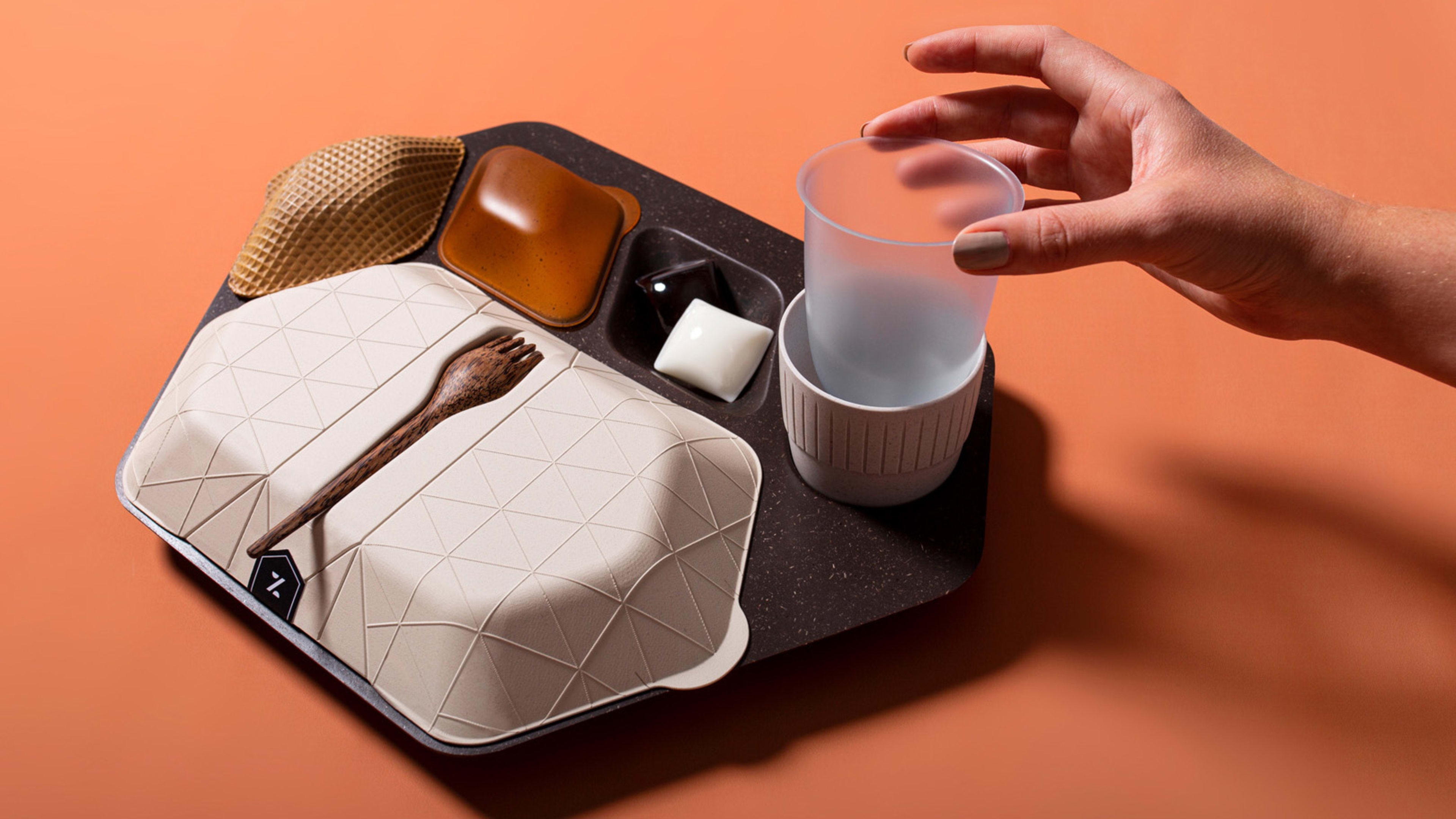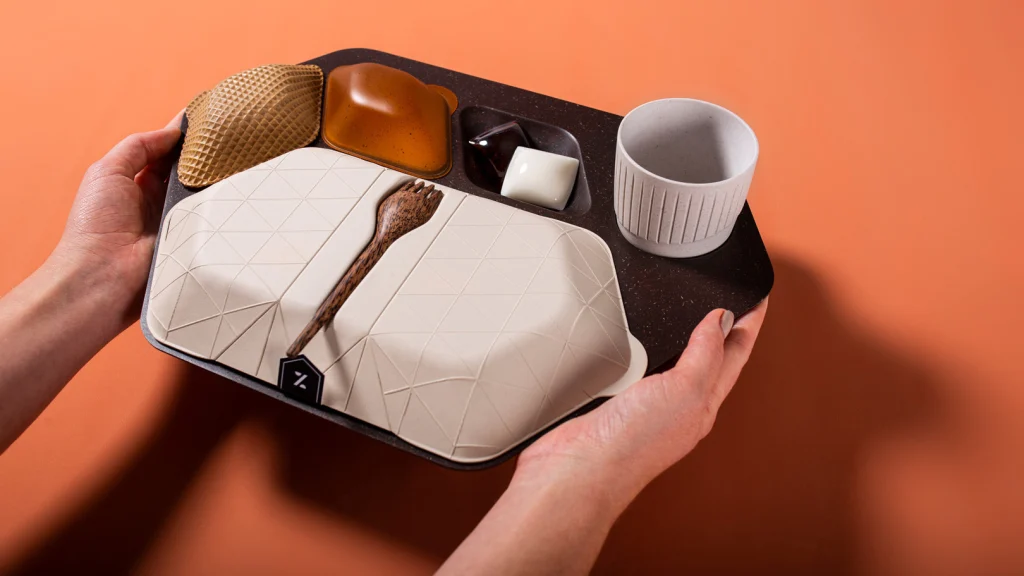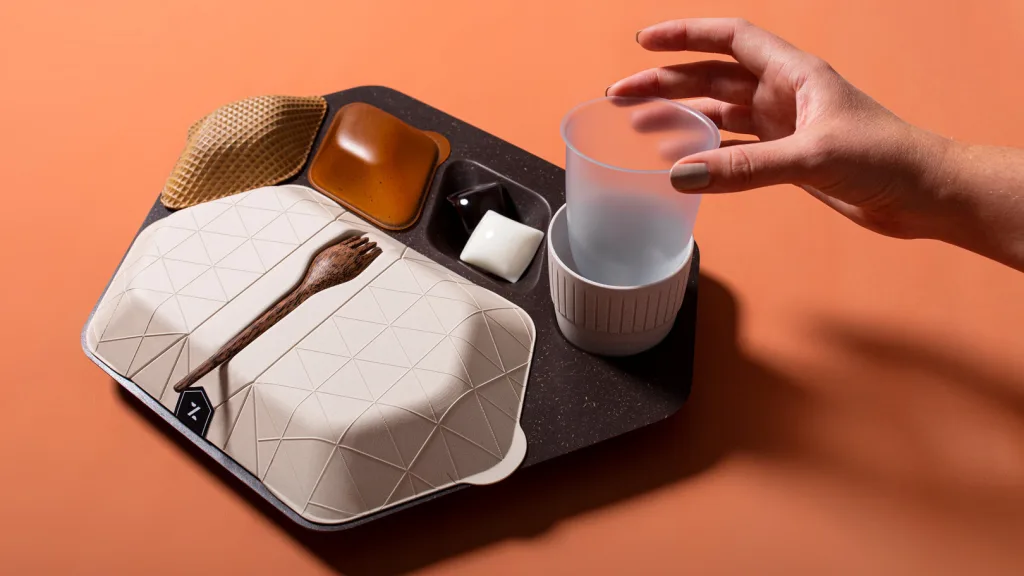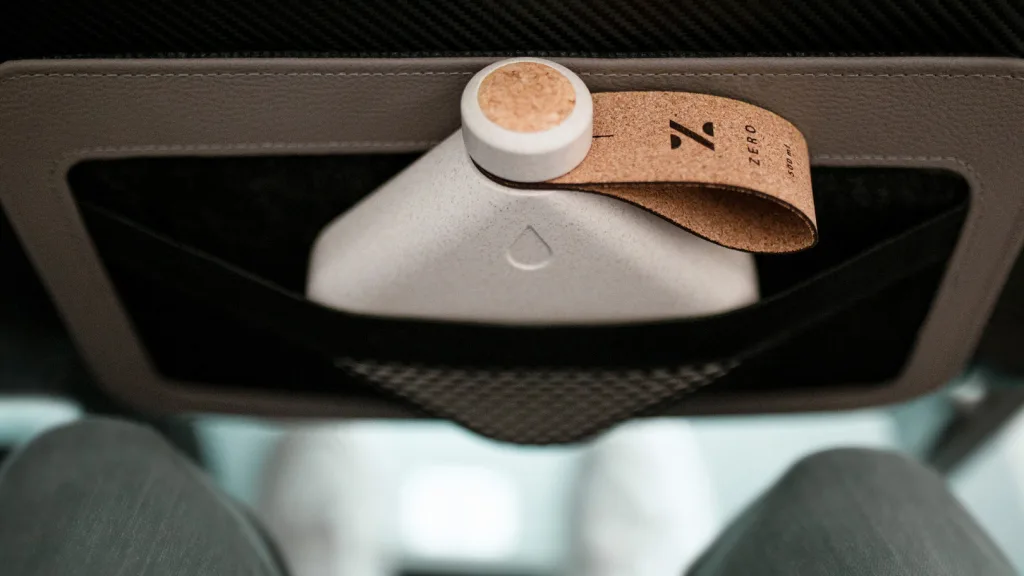Last year, a record 45 million airline flights took place worldwide, shuttling roughly 4.5 billion travelers. The amount of plastic waste generated with each takeoff is enormous; meal trays, earphones, and amenity kits all contribute to the 5.7 million tons of cabin waste produced on passenger flights each year.
PriestmanGoode, a design studio focused on travel, is addressing this environmental issue with a line of in-flight products made from sustainable materials. Their green service items are on display at the Design Museum in London as part of an exhibit called Get Onboard: Reduce. Reuse. Rethink. And while their products remain prototypes for now, the studio hopes to develop them for use in the future.
“The key reason we have addressed air travel is that very little plastic waste is actually recycled—it is incinerated or ends up as landfill due to lack of infrastructure at destinations and contamination legislation,” explains Jo Rowan, associate strategy director at PriestmanGoode, who led the project. “We wanted our exhibition to highlight the scale of the issue, and encourage visitors to become more aware of their own behavior as well as the role that they can play in moving the industry to be more sustainable.”
The studio, which has been designing for airlines like Lufthansa and aerospace companies like Embraer for over two decades, reimagined typical meal trays, water bottles, and other cabin materials as part of an internal, sustainability-focused project. In-flight food service includes everything from trays to single-use plastic utensils and cups; PriestmanGoode’s lightweight concepts propose using coffee grounds and rice husks to make trays; algae, bamboo, and banana leaves to make lids; and coconut wood to make sporks. These materials are all edible, biodegradable, and compostable, and can be washed for future reuse.
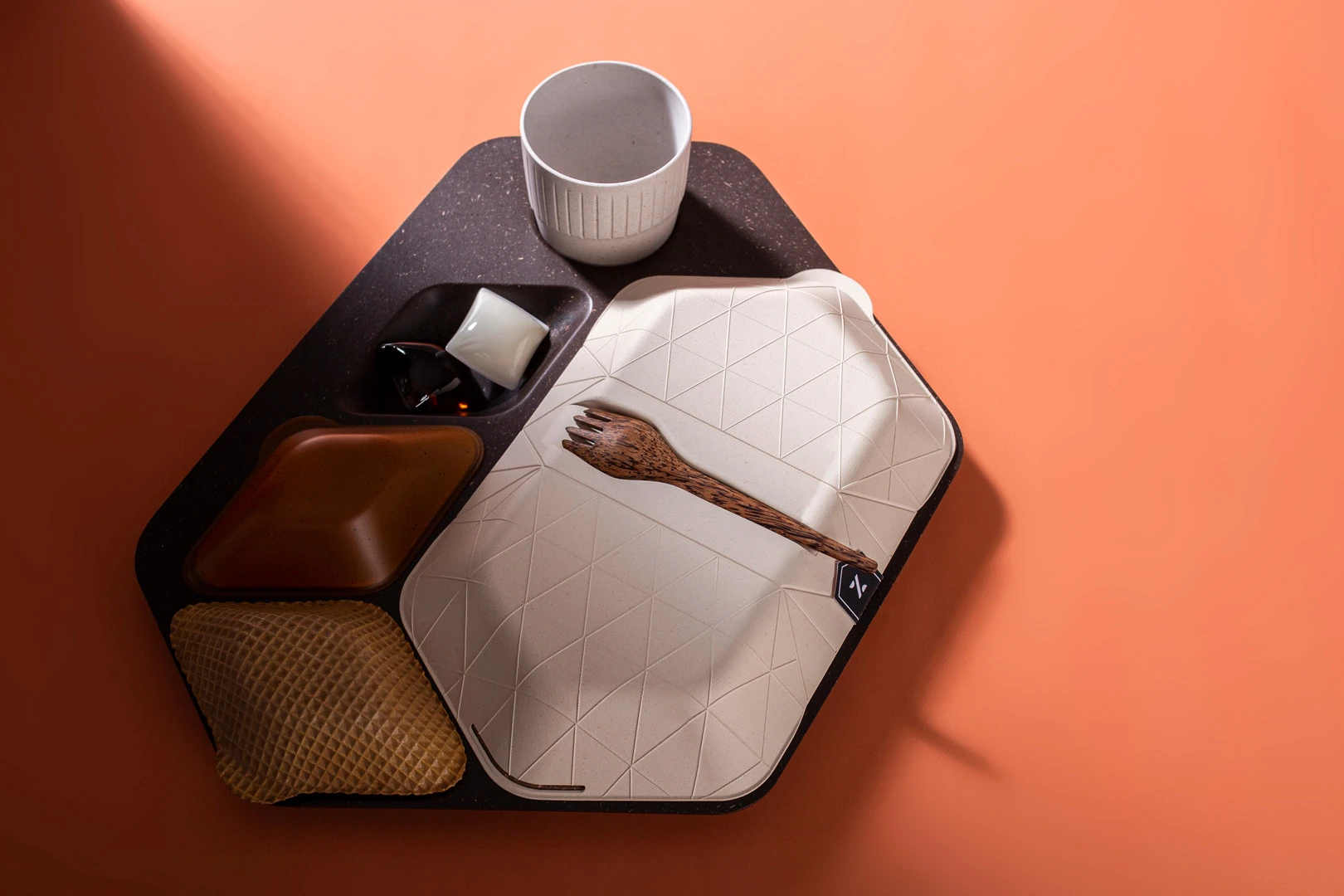
“We’ve used a wide range of materials for our design concepts. If you consider a meal tray, different elements need to satisfy different requirements,” says Rowan over email. “Base dishes for main meals, for instance, need to be able to withstand heat, while salad dishes need to be able to withstand refrigeration. If you’re moving away from plastics, there isn’t a single material that meets all necessary criteria, so it’s about a combination of different solutions.”
According to the International Air Transport Association, each passenger on a long-haul flight creates an average of three pounds of waste, a third of which is single-use plastic. But other aspects of air travel create unnecessary waste as well—including airports. Heathrow Airport, in conjunction with the Refill Campaign, encourages travelers to refill reusable bottles from water fountains rather than purchasing plastic bottles. The airport says it could reduce its plastic bottle consumption by 35 million a year if more passengers committed to it.
PriestmanGoode’s design concepts also aim to encourage these efforts, Rowan explains: “We’ve also designed a refillable water bottle made of cork and bioplastic, which is designed for repeated but short-term use. The idea was to address the impulse buy at airports, and create a bottle that once used, can be commercially composted.”
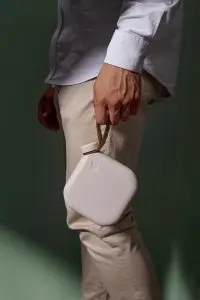
Rowan and her team mined airline research to find aspects of the in-flight experience that could be improved upon with reuse in mind. In the case of amenity kits—plastic bags filled with goodies like sleep masks and miniature toiletries—the studio realized that if passengers were incentivized to bring their own lotions and toothbrushes through the implementation of a reward system, those kits could be eliminated.
“If as a passenger you knew that your demand for some onboard services contributed to the scale of the waste problem, would you change your demand? Changing demand will affect supply. If we want to effect real change in the travel industry, we need to rethink products, services, and behavior both from the airlines’ and transport operators perspectives, as well as from the passengers,” Rowan says.
Though their designs began as an internal studio project, and are still at the conceptual phase, PriestmanGoode has already begun talking to airlines and suppliers about the possibility of manufacturing and implementing these sustainable products.
“We know things need to change, and soon,” Rowan says. “Some countries plan to introduce bans on single-use plastic as early as 2021, so legislation is coming, and the industry will need to adapt.”
Recognize your brand’s excellence by applying to this year’s Brands That Matter Awards before the early-rate deadline, May 3.
